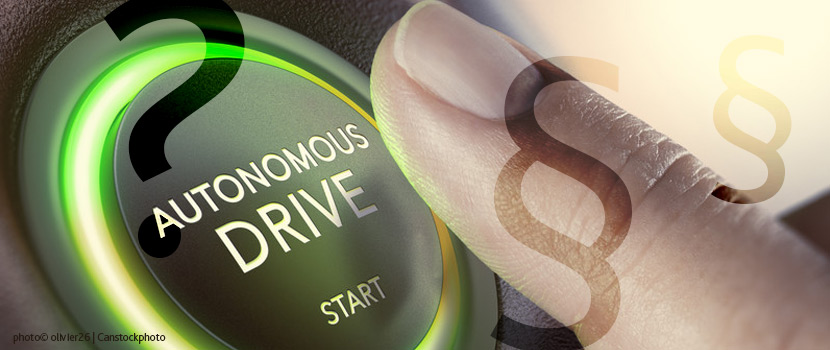The first autonomously driving cars could roll over the highways in just over seven years. While the developers make technically fast progress, there are still many legal gaps.
It sounds fantastic: with the emergence of autonomous cars, there will be less traffic fatalities and traffic jams. However, the liability, if the driver does not drive himself and there is an accident, is still to be regulated. The automotive industry itself sees the responsibility first and foremost at the system developers of artificial intelligence.
This was the result of a representative survey of the industry association Bitkom among board members and managing directors of companies in the automotive industry with 20 or more employees. According to 41 percent of automotive companies, the software providers should be liable for accidents. Only 19 percent, however, see the automaker in duty. One out of every five decision-makers in the automotive industry (21 percent) sees the driver as responsible – even though an autonomous vehicle will no longer have a driver in the current sense. And only 12 percent advocate that the vehicle owner should adhere. “If we want to gain the necessary acceptance for autonomous driving, then we have to ensure that nobody is liable for something he can not control,” says Bitkom President Achim Berg. “One thing is certain: with autonomous vehicles, there will be significantly fewer accidents than with human drivers. The liability issue must be clarified as soon as possible and be binding so that autonomous vehicles can be used.”
Clear definitions
In addition, the German Traffic Safety Council (DVR) requires manufacturers, standards organizations and legislators to draw up uniform terms and definitions, operating principles, warnings and requests to the users of automated driving functions. A concern that seems plausible, because only if the drivers know exactly what to do, there can also be a clearer answer in liability issues. In the opinion of the DVR, this also applies to human-machine interfaces. They must be unique, so that users do not use the driving functions by mistake or in abuse.
Clearly defined responsibilities
Andree Hohm, Project Leader Selfdriving Car at Continental, points out that there must always be a clear distinction between the responsibility of the driver and the manufacturer. “Both could be liable in the event of an accident, because the driver needs to know which mode of driving he is in and what his responsibilities are,” Hohm said. This could be the case, for example, if he fails to comply with the system’s request to regain control. By contrast, if the accident is clearly attributable to the system, then the vehicle manufacturer would also have to be liable.
Clarification is important
This approach of the different scenarios makes it clear that there is no clear legal basis in this area. This still has to be created, and here, in particular, the vague area of the handover of control will need to be clearly defined. It must be clearly communicated that a considerable part of the responsibility lies with the driver. If one considers the survey of the industry association Bitkom, then the citizens and decision-makers of the automobile industry rather see the responsibility with the software supplier of the artificial intelligence. That applies to 38 percent of the German citizens. Similar numbers are in favor of the automaker (35 percent). Almost one in five (19 percent) sees the driver as being responsible. This was the conclusion of a representative survey of 1,006 German citizens, which was already carried out on behalf of Bitkom at the beginning of the year.
Link:
Recommendations of the German Road Safety Council on automated driving functions




